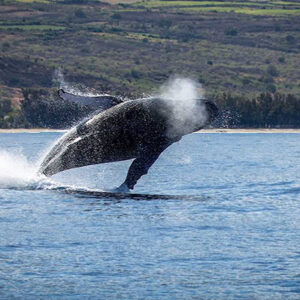
The world’s largest gorilla subspecies, also called Grauer’s gorillas – was once considered an endangered species. But a new study has found that their estimated global population has risen almost twice the amount. This has also proven to be very good news for nonprofits, rangers, and other caretakers that have been working tirelessly to make sure that this beloved animal will no longer be considered endangered.
The former global estimate sat at 3,800 individual Grauer’s gorillas to the new number, which is estimated to be 6,800.
This new number comes from recent field surveys were conducted within eastern Democratic Republic of the Congo, considered this species’ largest residential locations on the planet. Meanwhile, it was once considered incredibly inaccessible for surveys during past decades.
The results of the survey, which was led by the Wildlife Conservation Society (WSC), have been published in the American Journal of Primatology.
In a former peer-reviewed paper from 2016, which was also led by the WCS, had shown that the decline in the population of the species was already at a worrisome 80 percent since the last time they were able to conduct a range-wide survey which was back in the mid-1990s. At the same time, because of the region insecurity in 2016, the survey estimate wasn’t able to add data from every area of the Grauer’s gorilla species range.
The recent 2021 population estimate of this majestic animal managed to include new field surveys taken from the Oku forests, and from what they saw, there was a smaller decline than what the researchers originally feared. These recent findings have given new hope to the Grauer’s gorilla conservationists, also because their populations in the Kahuzi-Biega National Park highland sectors have managed to remain pretty stable for the past two decades.
According to lead author of the study, Dr. Andrew Plumptre, Key Biodiversity Area Secretariat hosted by Birdlife International, who worked together to conduct the research with WCS shared, “It is a tribute to the courage and dedication of the Congolese biologists who took part.”
Moreover, other species that have also managed to remain population steady over the past two decades are the chimpanzees.
Plumptre shared in WCSNewsroom, “We show that gorillas and chimpanzees are avoiding areas where people are extracting minerals, an occupation that contributes to the insecurity in the region.”
The Graure’s gorillas, which are also known as Gorilla beringei graueri, are considered a subspecies of eastern gorilla normally weighing over 450 pounds as adults, are only found in the eastern Democratic Republic of Congo.
The study authors share that if this study proves anything, it’s the importance of good forest protection within the region. Back in 2018, three of the local community forest concessions were created, comprising of a total area of 565 square miles, or 1,465 square kilometers, and credited to the Oku community management.
In addition to these conservationist groups, WCS is also working with the ICCN, Government’s Nature Conservation Agency, and the local NGO Reserve des Gorilles de Punia (RGPu) in order to develop more Wildlife Reserve in the Oku forests. They hope to add up to 1,158 square miles, or 3,000 square kilometers, of forest for the Grauer’s gorillas, as well as other flora and fauna in the region.
Moreover, 80 percent of the world’s supply of coltan – which is a dull black metal ore – is found in the Democratic Republic of the Congo and used in quite a number of electronic devices all over the world, which is also a large portion of the Grauer’s gorilla habitat before. The hope is that these ongoing conservation efforts will help support the local community management of the Oku forests in order to continue to protect these gorillas and their territories.
What are your thoughts? Please comment below and share this news!
True Activist / Report a typo


